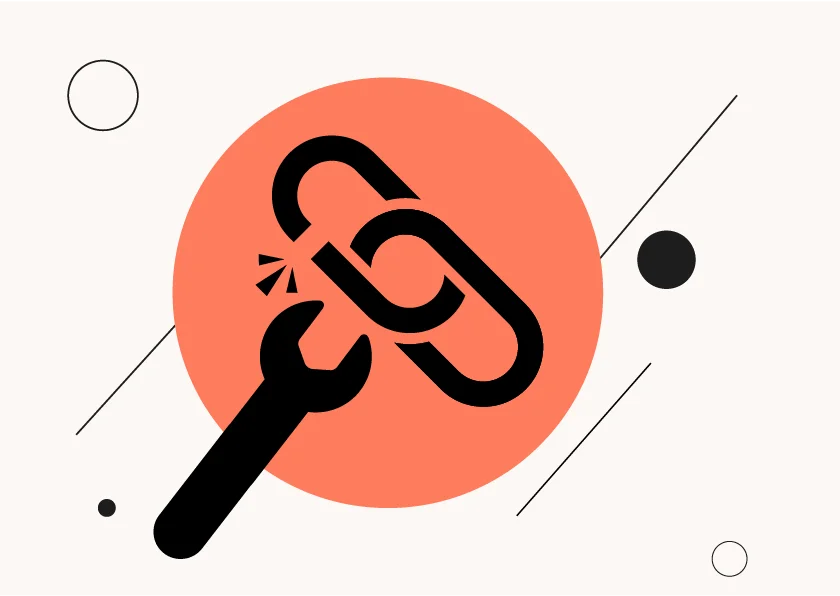Google PageRank has become synonymous with search engine optimization. Even though Google’s ranking algorithm has evolved quite a bit over the years, PageRank remains one of the most crucial signals used to determine the order of results on Google’s legendary search engine.
But what exactly is PageRank, and why does it matter so much for SEO? This comprehensive guide will explain everything a beginner needs to know about Google PageRank – from what it is to how it works, why it’s important, and how to improve your PageRank score.
We’ll cover topics like:
- A brief history of the PageRank algorithm
- An explanation of how the PageRank formula calculates scores
- The key factors that influence your PageRank
- Whether PageRank is still relevant in 2023
- Tips to build high-quality backlinks and improve your ranking
A solid grasp of this fundamental SEO concept sets the foundation for an effective search optimization strategy.
So, Let’s get started.
What is PageRank?

PageRank is a link analysis algorithm developed by Google’s co-founders Larry Page and Sergey Brin while researching search engines at Stanford University.
In simple terms, it is a system for calculating the importance of a webpage based on the external pages that link to it. It works on the premise that pages earning more backlinks from other authoritative sites tend to be more reputable resources on a given topic.
A Brief History of PageRank
The PageRank algorithm was created in 1996 by Larry Page and Sergey Brin, the famous co-founders of Google. The initial concept behind it formed part of their research project while PhD students at Stanford University.
Page and Brin realized they could measure the importance of a webpage by examining the number and quality of links pointing to it. This mirrored the academic citation process where papers gain credibility by being referenced in subsequent research publications.
They coined the term “PageRank” by combining Larry Page’s name with the word “rank”. The unique SEO algorithm was later added to the Google search engine they developed in 1998.
Google’s new method of ranking web pages by analyzing backlinks quickly proved superior to existing techniques. It allowed the search engine to surface more authoritative and relevant content to searchers.
The company was so confident in PageRank’s abilities that they opened up data about websites’ PageRank scores to all internet users via the Google Toolbar. However, over time manipulation of scores by spammers would eventually lead to this transparency being limited.
Nonetheless, even over 20 years later, PageRank remains one of the key signals Google uses to assess the importance of pages. Let’s now examine exactly how PageRank works.
Understanding How PageRank Works
At the most fundamental level, PageRank operates by counting backlinks to a webpage much like an academic paper counting its citations. The more sites that link to a page, the higher authority it has.
But PageRank doesn’t treat all backlinks equally. It uses an algorithm to assign each link a value depending on certain quality factors. The total PageRank score is calculated using both quantitative and qualitative data.
PageRank Scores

Every webpage has a PageRank score between 0-10. The higher the score, the more important Google considers the page in its ranking decisions:
- PageRank 0 – Brand new page with no backlinks.
- PageRank 1 & 2 – Limited backlinks from low authority sites.
- PageRank 3 & 4 – Moderate number of reasonably reputable backlinks.
- PageRank 5+ – High-quality backlinks from authority sites.
The maximum PageRank score is 10 and very few sites achieve this exclusive status.
Link Juice Distribution
Each link passes on some link juice ranking power from the site linking to yours. The higher the authority of the site linking to you, the more link juice you receive.
For example, a backlink from a PR10 site like Wikipedia will pass on much more link juice than one from a PR2 blog.
In the original PageRank algorithm, link juice was distributed evenly between all outbound links on a page. So the more links on the same page, the less PageRank each one passed on.
This model has likely been refined over the years but backlink quality remains a major determinant of rankings.
PageRank Scoring and Calculation Methods
The original PageRank algorithm used the following formula to calculate a page’s score:
PR(A) = (1-d) + d(PR(T1)/C(T1) + … + PR(Tn)/C(Tn))
Don’t worry if that looks complex! Here’s what each part means:
- PR(A) – The PageRank score of page A being calculated.
- (1-d) – A probability score based on the sum of all web page PRs equaling 1. Its value is generally 0.15.
- d – A damping factor set by Google, usually 0.85.
- PR(Tn) – The PageRank score of each page T linking to page A.
- C(Tn) – The number of outbound links on page T, used to divide the PR score.
This formula outputs the final PageRank value for page A between 0-10.
Here’s a simple example with 3 pages:
Page W has PR5 and has 2 outbound links
Page X has PR7 and has 3 outbound links
Page Y has PR8 and has 1 outbound link
Page Z links from Pages W, X and Y
Therefore:
PR(Z) = (1 – 0.85) + 0.85(PR(W)/2 + PR(X)/3 + PR(Y))
= 0.15 + 0.85(2.5 + 2.33 + 8)
= 6.52
So Page Z ends up with a respectable PageRank score of 6.52!
Google has likely tweaked its scoring methodology over the years. But judging importance based on backlink quality remains at the core of the current algorithm.
Key Factors That Influence Your PageRank
Many different backlink factors determine the PageRank scores and link juice passed on by sites linking to your webpage. Some of the most important ones include:
Backlink Source Authority
The authority and PageRank score of the site sending the backlink plays a major role. Links from high PageRank sites like Wikipedia pass on significantly more value than low-quality sites.
Link Location Within Content
Links placed prominently in the main content rather than sidebars or footers tend to be weighted more highly.
Anchor Text Relevance
Links with anchor text containing relevant keywords related to the page’s content are seen as more meaningful endorsements by Google.
Internal Link Structure
How pages on your site interlink can indicate relative importance for ranking. Well-optimized internal links help establish a relevant hierarchy.
Link Velocity
Google prefers links that grow at an organic rate. Sudden backlink spikes from low-quality sites can trigger algorithm penalties.
Link Diversity
Backlinks from a range of reputable external sites related to your industry indicates popularity better than an artificial link scheme.
Now that we’ve covered what PageRank is and how it works, let’s examine why it still remains highly relevant for SEO in 2024.
Why PageRank Still Matters for SEO
Given how much Google’s algorithm has evolved over 20+ years, you might wonder if PageRank is still relevant. Well several pieces of evidence indicate it’s a crucial factor:
1. Google Confirmation
In 2017, Google’s Gary Illyes confirmed PageRank is still used along with hundreds of other ranking signals. So while the original formula has been refined, assessing backlink quality remains a core component.
2. The Backlink Factor
Google has directly stated that along with content and keywords, backlinks and citation flow are among their top 3 ranking factors.
3. Expiration of Original Patent
When Google’s PageRank patent expired in 2019, they updated it rather than abandoning it altogether. The algorithm lives on in an advanced form.
So optimizing your backlink profile remains vital for competing in the SERPs against authoritative domains in your niche. Let’s look at how you can check your site’s PageRank data.
Measuring and Monitoring Your PageRank Scores

Since 2016 when Google retired their public PageRank scores in the Toolbar, officially checking your website’s PageRank became difficult. However, third-party SEO tools stepped in to provide reliable estimates.
Moz PageRank Alternatives
Moz developed an accurate alternative metric called Domain Authority. This scores sites out of 100 based on backlink quality to predict Google rankings. Open Site Explorer also estimates Domain and Page Authority.
Ahrefs PageRank Estimates
Ahrefs’ Domain Rating functions similarly by evaluating backlink power on a 0-100 scale. It offers predictions aligned with actual Google results.
By monitoring DA, PA or DR year-over-year, you can measure progress optimizing your overall link building efforts.
Link Building Strategies to Optimize PageRank
The key to ranking higher is organically building quality backlinks from reputable sites in your field. Here are some effective tactics:
Create Resource Pages
Build links by offering value like comprehensive guides, ebooks, tools or webinars in your industry. Attractive resources encourage citations.
Guest Post Outreach
Writing posts for popular industry blogs helps secure valuable backlinks and raises domain visibility. Prioritize the sites with highest relevance and domain authority.
Promote Content
Use social media, email marketing, PR distribution services to actively promote your best content. Amplify reach to boost link earning potential.
Refresh Old Content
Revive evergreen content by updating facts, stats, examples etc. Republish and re-promote it to capture quality links as industry data changes.
Build Relationships
Proactively network with influencers, partners and industry websites. Strong connections ease the process of securing backlinks down the line.
The key principles here are adding value for potential referrers and earning links organically. Avoid buying links or using automated software.
Actionable Tips to Improve Your PageRank
Here are some parting tips to help improve that all-important PageRank score:
- Monitor your scores using free tools like Moz’s Open Site Explorer or Ahrefs to benchmark progress.
- Clean up toxic links from low-quality sites hurting your rankings using Google Disavow Links tool.
- Prioritize quality over quantity for backlinks by securing endorsements from reputable authority sites, even if that means fewer links.
- Promote your best content extensively via social media, outreach emails and PR distribution services to boost link potential.
- Improve internal site architecture by interlinking related pages and structuring clear URL hierarchies.
- Produce more high-value resources like guides and ebooks to encourage industry citations by positioning your brand as an authority.
After reading this complete beginner’s guide, you should now have a solid grasp of what the Google PageRank algorithm is, how it calculates rankings using backlinks and why it continues to matter greatly in 2024. Just remember that genuine, quality links remain the ethical key to boosting your website’s authority.
Have any other questions about PageRank in SEO? Let me know in the comments!





